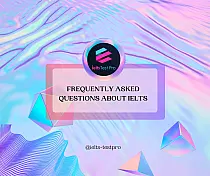-
Inspiracje
- Najnowsze
- Najpopularniejsze
- Zaskocz mnie
- Obserwowane
- MAGazyn
- Moda damska
- DIY - zrób to sam
- Kuchnia
- Uroda
- Wnętrza
- Humor
- Ogród
- Ślub
- Architektura
- Biżuteria
- Design
- Dziecko
- Film
- Fotografia
- Gadżety
- Historia
- Hobby
- Inne
- Książka
- Moda męska
- Muzyka
- Nauka i natura
- Plakaty i obrazy
- Podróże i miejsca
- Samochody i motocykle
- Sport i fitness
- Święta i uroczystości
- Tatuaż
- Zwierzęta
- Partnerzy
- KONKURS
-
Zakupy
-
ONA
- Ubrania
- Bielizna
- Bluzki
- Bluzy
- Dresy damskie
- Kombinezony
- Koszule
- Koszulki
- Kurtki
- Płaszcze
- Spodnie i leginsy
- Spodnie jeans
- Spódnice
- Stroje kąpielowe
- Sukienki i tuniki
- Swetry
- Szorty
- Zestawy
- Żakiety i kamizelki
- Buty
- Baleriny
- Botki
- Czółenka
- Espadryle
- Glany
- Japonki
- Kalosze
- Klapki
- Koturny
- Kowbojki
- Kozaki
- Obuwie Domowe
- Półbuty
- Sandały
- Sportowe i lifestyle
- Szpilki
- Tenisówki i Trampki
- Trapery i trekkingi
- Dodatki
- Bransoletki i zawieszki
- Breloki
- Czapki i kapelusze
- Etui
- Kolczyki, nausznice
- Kołnierzyki
- Kosmetyczki
- Naszyjniki, kolie i zawieszki
- Okulary
- Ozdoby do włosów
- Parasole
- Paski
- Pierścionki
- Plecaki
- Portfele
- Rękawiczki
- Skarpety
- Szaliki i chusty
- Torby i torebki
- Walizki
- Zegarki
- Zestawy biżuterii
- Zdrowie i uroda
- Balsamy
- Bazy i podkłady
- Cienie do oczu
- Dezodoranty
- Higiena jamy ustnej
- Korektory
- Kredki
- Kremy i serum
- Lakiery
- Manicure i pedicure
- Maseczki
- Odżywki
- Peeling
- Perfumy i wody perfumowane
- Pielęgnacja po opalaniu
- Płyny żele i mydła
- Pomadki i błyszczyki
- Pudry
- Róże
- Stylizacja włosów
- Szampony
- Toniki i demakijaż
- Tusze
- Wody toaletowe
- Zestawy
-
ON
- Ubrania
- Bielizna
- Bluzy
- Kąpielówki
- Koszule
- Kurtki i płaszcze
- Marynarki kamizeki
- Spodenki i szorty
- Spodnie
- Swetry
- T-shirt długi rękaw
- T-shirt i Polo
- KULTURA
- GADŻETY
- DZIECKO
-
DOM I WNĘTRZE
- Wnętrza
- Akcesoria dom
- Ceramika i szkło
- Do baru
- Do biura
- Do kuchni
- Kubki kufle i kieliszki
- Lustra
- Nakrycia stołu
- Oświetlenie
- Plakaty i tablice
- Pościele, poduszki i nakrycia
- Przechowywanie
- Tekstylia
- Zegary i budziki
-
Marki
- MARKI
- Adidas
- Adriatica
- Alter Core
- Armani
- Asics
- Atlantic
- Azzaro
- Barbie
- Bburago
- Be-U
- Benetton
- Bering
- Black Plum
- Burberry
- Bvlgari
- Cacharel
- Calvin Klein
- Canon
- Carolina Herrera
- Carrera
- Casio
- Celestron
- Chanel
- Chloe
- Clinique
- Cobi
- Coloud
- Converse
- David Beckham
- Davidoff
- Delbana
- Diesel
- Dior
- DISNEY
- DKNY
- Dolce & Gabbana
- DOXA
- Dr. Martens
- Dunhill
- Ecco
- Elizabeth Arden
- Esprit
- EVC DSGN
- Festina
- Fila
- Fisher Price
- Frederique Constant
- Givenchy
- Gucci
- Guerlain
- Guess
- Hasbro
- Helena Rubinstein
- Hermes
- Hi-Tec
- Hugo Boss
- Hunter
- Iceberg
- Ingersoll
- Issey Miyake
- Jean Paul Gaultier
- Jennifer Lopez
- Jil Sander
- Jimmy Choo
- Joop!
- Juicy Couture
- Kappa
- Kenzo
- Komono
- Lacoste
- Lalique
- Lancome
- Lanvin
- Lee
- Lego
- Lorus
- Marc Jacobs
- Marshall
- Masaki Matsushima
- Matchbox
- Mattel
- Max Factor
- Max&Co
- Mc Arthur
- Mizuno
- Mont Blanc
- Moschino
- Mr. Gugu & Miss Go
- My Little Pony
- New Balance
- Nike
- Nikon
- Nina Ricci
- Ninety Eight Clothing
- Nivea
- Nixon
- Nooka
- Obaku
- Onitsuka Tiger
- Paco Rabanne
- Pentax
- Pewex
- Pierre Cardin
- Playboy
- Prada
- Puma
- Ralph Lauren
- Reebok
- Regatta
- Revlon
- Rexona
- Rider
- Salomon
- Salvatore Ferragamo
- Shelyak
- Shiseido
- Skagen
- Swarovski
- Takahashi
- Thierry Mugler
- Timberland
- Timex
- Tommy Hilfiger
- UGC
- Urbanears
- Valentino
- Vans
- Versace
- Viktor & Rolf
- Vixen
- Welly
- William Optics
- Wrangler
- Yimaida
- Yukon
- Yves Saint Laurent
-
ONA
-
Szukaj
- Losuj
Inne
Ielts Test Pro - Blog
How to conquer IELTS Reading True, False, Not Given Questions?
Conquering IELTS Reading True, False, Not Given (TFNG) questions requires a combination of careful reading, critical thinking, and a deep understanding of the passage's content. Here's a step-by-step approach to effectively address these types of questions:
Understand the Task: Begin by understanding the differences between True, False, and Not Given statements:
True: The information matches the information in the passage and is consistent with what is stated.
False: The information contradicts what is stated in the passage.
Not Given: The information in the statement is not mentioned or discussed in the passage.
Skim the Passage: Start by skimming through the passage to get a general idea of the content, main ideas, and structure. This will help you understand the context before diving into the questions.
Read the Question Carefully: When you encounter a TFNG question, read it carefully and underline any keywords or phrases that are crucial for understanding the statement.
🧐🧐🧐Read More: https://trello.com/u/ieltstestpro
Locate Relevant Information: Read the section of the passage that corresponds to the question. Look for information that directly relates to the statement in the question.
Compare Statements and Passage: Compare the statement in the question with the information you've found in the passage. Pay attention to exact details and keywords.
Avoid Assumptions: Don't assume anything beyond what's explicitly stated in the passage. The correct answer should be supported by direct evidence in the text.
🧐🧐🧐Read More: https://ok.ru/group/62148366565486
Be Careful with Not Given: If the information in the statement isn't directly addressed in the passage, it's "Not Given." Avoid inferring or making assumptions.
Check Synonyms and Paraphrasing: Sometimes, the statement might be paraphrased or use synonyms. Be attentive to variations in wording that convey the same meaning.
Avoid Personal Opinions: Base your answer solely on the information provided in the passage. Your personal opinions or outside knowledge should not influence your response.
🧐🧐🧐Read More: https://wakelet.com/@ieltstestpro
Process of Elimination: If you're unsure, eliminate options that are clearly False or Not Given, and then carefully evaluate the remaining options to determine if they are True.
Review for Consistency: Ensure that your chosen answers are consistent with the overall tone, context, and details of the passage.
Time Management: Keep track of your time, as you need to complete all the questions within the allocated time. If you're spending too much time on one question, move on and return to it later if time allows.
Review Your Answers: If time permits, review your answers to ensure you've accurately assessed the statements.
Practice with a variety of passages containing True, False, Not Given questions will help you develop a strategy for effectively analyzing and selecting the correct responses. Remember, the key is to stay focused on the passage's content and avoid making assumptions or drawing conclusions not supported by the text.
Conquering IELTS Reading True, False, Not Given (TFNG) questions requires a combination of careful reading, critical thinking, and a deep understanding of the passage's content. Here's a step-by-step approach to effectively address these types of questions:
Understand the Task: Begin by understanding the differences between True, False, and Not Given statements:
True: The information matches the information in the passage and is consistent with what is stated.
False: The information contradicts what is stated in the passage.
Not Given: The information in the statement is not mentioned or discussed in the passage.
Skim the Passage: Start by skimming through the passage to get a general idea of the content, main ideas, and structure. This will help you understand the context before diving into the questions.
Read the Question Carefully: When you encounter a TFNG question, read it carefully and underline any keywords or phrases that are crucial for understanding the statement.
🧐🧐🧐Read More: https://trello.com/u/ieltstestpro
Locate Relevant Information: Read the section of the passage that corresponds to the question. Look for information that directly relates to the statement in the question.
Compare Statements and Passage: Compare the statement in the question with the information you've found in the passage. Pay attention to exact details and keywords.
Avoid Assumptions: Don't assume anything beyond what's explicitly stated in the passage. The correct answer should be supported by direct evidence in the text.
🧐🧐🧐Read More: https://ok.ru/group/62148366565486
Be Careful with Not Given: If the information in the statement isn't directly addressed in the passage, it's "Not Given." Avoid inferring or making assumptions.
Check Synonyms and Paraphrasing: Sometimes, the statement might be paraphrased or use synonyms. Be attentive to variations in wording that convey the same meaning.
Avoid Personal Opinions: Base your answer solely on the information provided in the passage. Your personal opinions or outside knowledge should not influence your response.
🧐🧐🧐Read More: https://wakelet.com/@ieltstestpro
Process of Elimination: If you're unsure, eliminate options that are clearly False or Not Given, and then carefully evaluate the remaining options to determine if they are True.
Review for Consistency: Ensure that your chosen answers are consistent with the overall tone, context, and details of the passage.
Time Management: Keep track of your time, as you need to complete all the questions within the allocated time. If you're spending too much time on one question, move on and return to it later if time allows.
Review Your Answers: If time permits, review your answers to ensure you've accurately assessed the statements.
Practice with a variety of passages containing True, False, Not Given questions will help you develop a strategy for effectively analyzing and selecting the correct responses. Remember, the key is to stay focused on the passage's content and avoid making assumptions or drawing conclusions not supported by the text.
MA==
Podobne inspiracje
1
IELTS Listening Test an overview & effective listen…
What is IELTS and IELTS Certificate?
The International…
IELTS Beginners: How To Start the IELTS Journey?
Ielts…
IELTS Academic and General Training
The International…
IELTS Writing Test – An Overview and Tips to Score a Hi…
IELTS Academic Writing Task 1
IELTS Writing test skill…
IELTS Reading Test: Information and Tips
Reading test…
Cách học và trau dồi vốn từ vựng IELTS Reading
Để h…
HOW CAN I BOOST MY SPEAKING SKILLS?
Improving your…
Frequently asked questions about IELTS
Certainly, h…






















